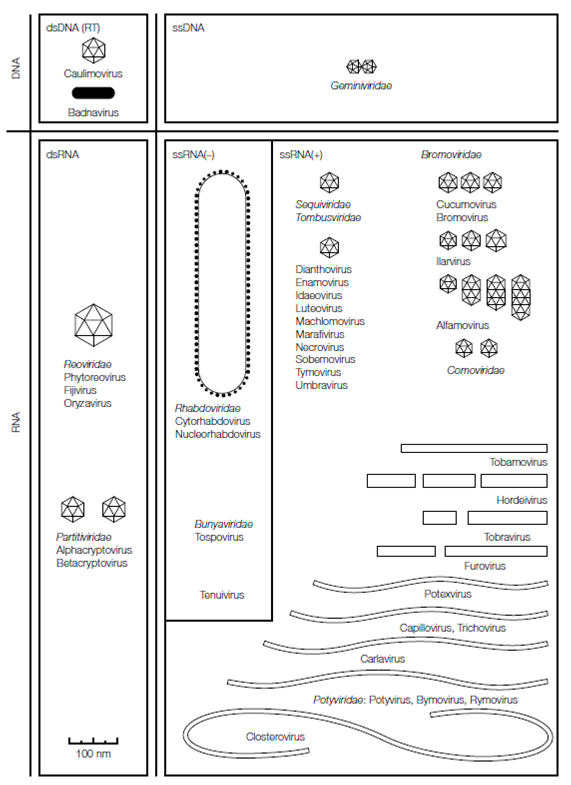Transmission, infection, and systemic spread
The stem and leaf surfaces of plants can in many ways be compared to the human skin; they do not have receptors for virus attachment and have a protective function. For plant viruses to be infectious they must penetrate this barrier and gain access to the meta- bolic machinery of the plant cell; hence it is often through wounds that viruses enter plant tissues. Many plant viruses depend on a vector for their transmission, generally

Figure: Families and genera of plant viruses.
invertebrates such as aphids, leafhoppers, mealy bugs, whiteflies, thrips, mites, and soil nematodes. A few viruses can be transmitted as a result of contact with contaminated implements (e.g. spades, hoes) or by direct contact between neighboring plants.
Some viruses are passed vertically to progeny plants through infected pollen or seeds and others are present in tubers, bulbs, and cuttings. In the laboratory, infection is achieved by rubbing the leaf with a cloth soaked in a virus suspension, using a fine abrasive to create the necessary wounds. In effect this procedure mimics the plaque assay described for animal viruses, but is not as accurate. On entry the virus particle is uncoated and goes through a replication cycle similar to that of animal viruses. Figure represents a diagram of the cycle of TMV. Plant viruses rarely cause significant damage and disease unless they become systemically distributed throughout the plant. Failure for this to happen explains why some plants are resistant to particular virus infections. Movement is facilitated by virus movement proteins, which are involved in the transport of virus or virus nucleic acid through the fine pores (plasmodesmata) in the cell walls that interconnect plant cells. Movement also occurs through the companion and sieve cells of the phloem, facilitated by viral capsid proteins.